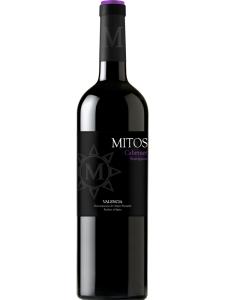Valencia is one of Spain's 17 administrative regions, known more for its paella and oranges than its wines. It is located at the center of the Spain's sunny east coast, which is completed by the Catalonia and Murcia regions to the north and south respectively. Valencia's administrative center is the eponymous city of Valencia, Spain's third-largest city and the Mediterranean's largest port.
In addition to the Valencia DO title, this region is also home to the Utiel-Requena and Alicante DOs, and produces a small quantity of sparkling Cava. As yet, there is no single, archetypal "Valencian" wine style, although the gradual move towards quality (away from the bulk-produced quantity on which the region focused in the 20th Century) has revolved around rich, fruit-driven reds made from Monastrell. Traditionally, the region's wine portfolio has been spread across various styles: easy-drinking reds, whites and rosés, hefty doble pasta reds and fortified moscatels.
Archaeological evidence suggests that winemaking in Valencia dates back more than a thousand years, but the region has never held a particularly prominent place on the world wine map. In the modern era, Valencia's wine production has focused more on quantity than quality, although this is now changing gradually. A handful of wineries have updated their winemaking techniques are now producing modern, fresh, oak-aged reds in line with contemporary wine fashion.
The Valencia DO title covers an impressive 32,000 acres (13,000 ha), divided unevenly between two distinct geographical areas. The smaller area, Clarino lies about 40 miles (65km) to the southwest of Valencia city, and dovetails with the northern edge of the Alicante DO zone; meaty reds made from Monastrell, Tempranillo, Cabernet Sauvignon and Merlot are the specialty here. The larger area, where the majority of vineyards are located, lies inland from the city, and spreads north and west into the foothills of the Sistema Ibérico mountain range. It can be further subdivided into three production zones, as described below.
The first, Alto Turia, is located roughly 45 miles (72km) northeast of Valencia city. As the name implies, this is an elevated (alto) area centered around the upper stretches of the Turia river. Vineyards here are planted at relatively high altitudes, 2300ft - 3600ft (700m - 1100m). This makes it the highest and coolest of the Valencia DO sub-zones, and therefore the best-suited to the production of dry white wines; Macabeo and the local Merseguera are the varieties of choice here.
Lower down the Turia valley lies the second production zone, where the region's sweet, idiosyncratic Moscatel de Valencia wine is produced. The vineyards here center around the parishes of Chiva, Cheste, Godelleta, Montroy, Monserrat and Turís, at altitudes of 500ft - 1300ft (150m - 400m). Although slightly hotter than Alto Turia, this area is cooled slightly by breezes from the Mediterranean. Moscatel de Alejandra is the variety behind the lusciously sweet wines made here.
Just to the east of the Turia valley lies the Valentino zone, which generates a wider variety of styles than its neighbors. White wines here are made from Macabeo and Merseguera, but also the French "international" varieties Chardonnay and Semillon. The preferred red-wine varieties here are Garnacha, Tempranillo, Cabernet Sauvignon and Merlot.
The Valencia DO laws are overseen by the local Consejo Regulador (wine authority), established in 1957.




